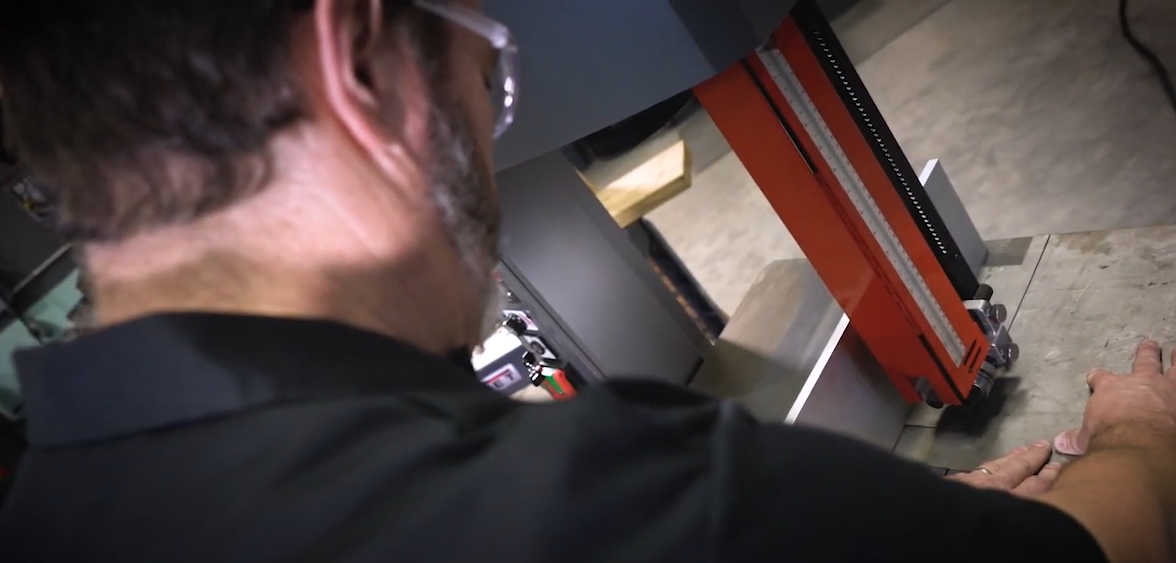

Every fabrication or metal shop has unique and diverse cutting requirements, making saw blade selection vital to your success across projects.
Choosing a Saw Blade
Metal shops use band saws for a wide range of cutting, including solid materials, heavy-wall tubing, structural shapes, high-efficiency bundle cutting, and hard allow materials such as tool steels. We understand no one blade is perfect for across the board, making it even more important to select the correct replacement blade for your JET saw.
Subjecting blades to different types of cutting naturally shortens the blade's life. It important to find the blade design tough enough to withstand your demands, while also producing a smooth finish that won't require secondary operations such as filing or grinding. Below, we gathered the most important considerations to help you choose a saw blade that will deliver the lowest cost per cut, and the highest value for your shop.
Blade Property Guidelines
Blade width: Use the widest blade your machine will take, except when cutting contours.
Tooth rake: Select the appropriate rake, or tooth angle, for the materials and shapes to be cut.
- A positive rake is best for thick solids and heavy-wall tubing.
- Straight or less positive rakes are preferred for most structural and bundle cutting.
Pitch: Defined as the number of teeth within a certain disatance on the blade, such as 25mm or 1 inch. Cutting thin sections of material requires a fine pitch with more teeth, while thicker sections require more course pitches with fewer teeth.
- Constant pitch: All teeth of the blade have a uniform spacing, gullet depth, and rake angle throughout the balde. This is designed for general-purpose cutting.
- Variable pitch: Various tooth sizes and gullet depth, substantially reducing noise and vibartion. Use variable pitch blades to cut structural, tubing, and solids smoothly and quickly.
Bimetal: Most blades used in fabrication are bimetal. This material is an industry workhorse and can be configured to withstand the constant impact of cutting shapes and bundles, yet are hard enough for continuous use with solids and heavy-walled tubing. They can even be used for occasional cutting of high-alloy steels.
Tooth shape (form): Blades come with many different variables, including tooth shape. A few examples are the following:
Regular
A conventional tooth used for general-purpose sawing with a straight (zero) rake.


Hook
A 10-degree positive rake for fast cutting of nonferrous metals, non-metallics, plastics, and wood.


Skip
A straight (zero) rake with shallow gulles for cutting large sections of soft nonferrous materials, plastics, and wood.


Consider Teeth Per Inch
A common cause of sawing problems is selecting the wrong teeth per inch (TPI) for your material thickness. Use the following guide to be sure you have the correct saw blade for your next job:
| Material Thickness | TPI |
| 1/4" or less | 14/18 |
| 1/4" to 7/16" | 10/14 |
| 7/16" to 9/16" | 8/12 |
| 9/16" to 11/16" | 6/10 |
| 3/4" to 1" | 5/8 |
| 1-2" | 4/6 |
| 2-5" | 3/4 |
| 5-10" | 2/3 |
| 10-20" | 1/1.5 |
| 20" or more | .8/1 |
JET Tip: If speed of cut is most important, opt for a lower TPI for faster cuts but a rougher finish. If finish is most important, opt for the high TPI as it will provide a smoother finish but at a slower pace.
Basic Cutting Problems and Solutions
It's better to be prepared than to be surprised. After choosing the replacement blade for your JET saw, it is still important to use it intelligently.
- Tooth damage: When blades are used for cutting structural steel or bundles, the teeth are sujbected to multiple impacts of different intensities anddirections. Most bandsaw blades fail because of this repeated shock, not necessarily excessive wear.
- Blade damage: Avoid blade damage by using a higher TPI, lower blade tension, thicker guage blade, checking your coolant, and adjusting your speed and feed.
- Pitch, speed, and feed: The main culprits for sawing problems are innapropriate ptich and improper speeds and feeds for the material type, especially when using blades of lower quality. The quality of the chip produced is an easy indicator of whether or not you have the appropriate speed and feed.
- Excessive speed or too fine of a pitch can cause chip welding and tends to produce a thin, spiral, blue-tinted chip.
- Low speed or too course a pitch can cause tooth breakage or workpiece stalling and results in the teeth taking chunks of material out during cutting.
Saw Blade Terminology
Tooth shape (form): Straight (also known as regular or constant), variable, hook, and skip
Tooth pitch: Distance from one tooth to the next
TPI (teeth per inch): Number of teeth a blade has for every inch, ranging from .8-32
Width: Distance from top of tooth to bottom of blade backing
Gate: The thickness of the blade, for example .025" or .035"
Rake Angle: Otherwise known as tooth angle, the standard is 0 degree and positive rake angle ranges from 3-12 degrees
Gullet: Round root portion, or gap, between the teeth
Kerf: Width of cut in material being sawed. Kerf is a combination of the thickness of the blade plues the width of the tooth set
Tooth set: Tilt of the teeth, which provides clearance in the cut. Setting to right of center or left of center determines the width of the kerf
Raker set: Standard design for most applications, with one tooth tilted left, then right, then straight
Wavy set: Recommended for light-duty saws, this set is designed with groups of teeth tilting left, then groups of teeth tilting right. This is feature is useful when tooth strippage is a problem on thin cross sections such as tubign or sheet stock